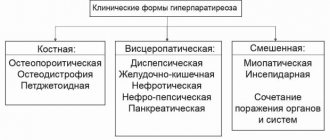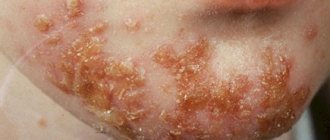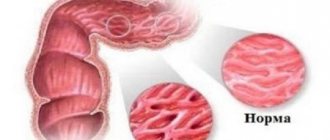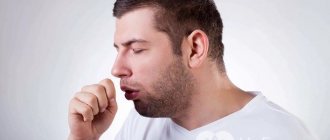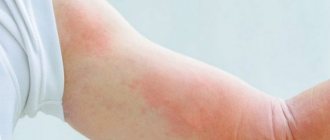Vitamins D are biologically active substances that differ from others by having fat-soluble properties. The substance is formed due to the effect of ultraviolet rays on animal and plant tissue. Only certain elements are formed in the human body.
The rest come from the external environment. Otherwise, disturbances in metabolic metabolism appear and rickets develops. An overdose of vitamin D3 is also dangerous. It can occur due to improper use of a drug that contains the required compound.
The vitamin D group includes not only cholecalciferol, but ergocalciferol (D2), stigmacalciferol (D6), dihydroergocalciferol (D4), sitocalciferol (D5). For humans, only the first two varieties of a natural element matter.
In appearance, these are transparent crystals that have no aroma. They can withstand high temperatures without problems. Express the amount of this ergocalciferol and cholecalciferol using international units. 1 IU is equal to 0.025 mcg of undiluted formulation.
Sources of vitamin
Overdose often occurs due to the combined use of foods and medications containing large amounts of vitamin D. Natural sources of the element cannot always be combined with synthetic drugs. This has a negative impact on your health.
The vitamin is found in some algae, yeast, fish, mushrooms (grown in the natural environment), butter, and caviar. To compensate for the deficiency, you need to add food of animal origin to your diet.
Thanks to this component, the human body increases the production of protein compounds responsible for the transport of calcium and phosphorus. These microelements are absorbed into the bloodstream from the small intestine. Without calcium binding protein, this process is impossible.
Vitamin D is also necessary for:
- Formation of new cells.
- Synthesis of monocytes.
- Stopping the growth of malignant tumors.
- Ensuring interaction between nerve endings and muscle fibers.
With insufficient amounts of cholecalciferol, the condition of bones and teeth worsens. They become more fragile. Vitamin D can be formed naturally. This requires exposure to the sun's rays (ultraviolet rays) on bare skin.
Therefore, children born in winter or autumn are necessarily prescribed a course of fortification. In the first year of their life, they are less likely to be exposed to the sun than babies born in spring or summer.
Directions of therapy.
Treatment of vitamin D poisoning is primarily aimed at relieving life-threatening symptoms.
Infusion therapy in such cases involves the use of complexones and hormonal drugs. Water-electrolyte imbalance is eliminated, blood acidity is leveled. At subsequent stages of the treatment and recovery process, the intake of calcium-containing products into the body is limited, and the amount of alkaline drinking increases.
It is recommended to eat phytin-containing foods (oatmeal), vitamin A and E. Retinol promotes the absorption of blood calcium by bone tissue, and tocopherol helps restore the physiological permeability of cell membranes.
Safe dose
The daily dose of the active substance is determined based on the state of health and individual characteristics of the body, in particular age. In this case, the diet must be taken into account. For example, baby food already contains vitamin D3 in the required dosage.
Therefore, a formula-fed baby does not need to be given cholcalciferol. The drug is taken daily, with a single dose of 100 to 4000 IU. Vitamins are prescribed by a doctor. He also selects the dosage regimen and daily dose. Doing this yourself is not recommended. Too much of the substance will lead to negative consequences.
It is not difficult to get poisoned by vitamin D3. It is enough to exceed the prescribed norm. Vitamins cannot be considered absolutely safe medicines, so they should be stored in a place inaccessible to small children and pets.
Prevention of excess and deficiency of vitamin D
Since an overdose of vitamin D is a consequence of excessive consumption of complexes containing this substance, it is worth mentioning the peculiarities of their intake.
Vitamin D supplements are used to treat osteoporosis, arthritis, arthrosis, as well as to quickly heal fractures and strengthen the immune system . The desired therapeutic effect from the use of such drugs is achieved only when taking strictly defined dosages. And their increase can lead to the problems described above.
It is worth noting that the use of natural vitamin D is preferable, but getting it in sufficient quantities through nutrition can be problematic. To do this, the menu must always include fatty fish or products (mushrooms, milk) that have been subjected to UV irradiation to increase the calciferol content in them. In other products its amount is small.
So if there is not enough calciferol in your diet and you don’t sunbathe much during the year, you should think about preventing hypovitaminosis D. The Osteo-Vit . It contains both synthetic and natural forms of vitamin D as part of an organic anabolic component - drone-brood homogenate.
The dose of vitamin D in Osteo-Vita does not exceed 8000 IU/ml (0.2 mg), so it is an over-the-counter drug classified as micronutrients. However, Osteo-Vit is effective not only in the prevention of hypovitaminosis D, but also in the treatment of musculoskeletal pathologies, as well as for enhancing immunity. The reason for this is the presence in its composition of the fortifier (amplifier) calciferol and other vitamins and nutrients. At the same time, the likelihood of getting vitamin D hypervitaminosis is reduced due to the low dosage of vitamin D.
Therefore, Osteo-Vit can be taken for a long time, and without any side effects.
USEFUL TO KNOW:
ABOUT JOINT DISEASES
How to avoid joint pain?
JOINTS Author: admin625.12.2018Leave a comment
No one thinks about how to avoid pain in the joints - the thunder hasn’t struck, why install a lightning rod. Meanwhile, arthralgia - the name of this type of pain - affects half of people over forty and 90% of those over seventy. So preventing joint pain is something worth considering, even if you...
Read more
ABOUT HORMONE THERAPY
The power of hormones. What active substances regulate cartilage restoration?
HORMONES Author: admin1110.12.2018 Leave a comment
A person’s condition and the coherence of the organs of his body are largely determined by hormonal balance. Cartilage restoration is also subject to the influence of ubiquitous life regulators. Without normalizing hormonal levels, complete regeneration of the joint is impossible. What strings does the invisible puppeteer, the endocrine system, pull, influencing cartilage tissue? Testosterone This hormone is produced by the gonads and the adrenal cortex, as in...
Read more
ABOUT BONE DISEASES
Fracture of the leg: symptoms and treatment. How to recover in a short time?
BONES Author: admin1112.08.2020
Fractures of the lower leg are a fairly common injury in the practice of a surgeon. It accounts for 10% of all other fractures. How quickly the bones heal and what treatment methods the doctor chooses depends on the complexity of the fracture, its location and the general health of the patient. It usually takes three to four months to restore bone integrity. However, modern science can significantly speed up this process.
Read more
ABOUT CONNECTIVE TISSUE DISEASES
ABOUT VITAMINS FOR BONES
May there always be sunshine! What is vitamin D for?
VITAMINSAuthor: admin311.12.2018Leave a comment
Sunlight for a person is not only a source of good mood, joy and happiness. When it comes into contact with the retina and skin, a large number of physiological processes are triggered in the body, for example, the synthesis of calciferol. What is vitamin D for, besides improving calcium absorption? How to compensate for its deficiency if exposure to ultraviolet rays of the sun is undesirable for a person? For…
Read more
DIAGNOSIS OF OSTEOPOROSIS
Clinical picture
Symptoms of vitamin D overdose depend on the form of the pathology. Children less than 6 months old most often suffer from the acute course of the disease. The cause of the development of pathological changes may be the penetration of high doses of the drug into the child’s body without special need or the presence of hypersensitivity to its components.
The clinical picture of an exacerbation is characterized by dehydration, lack of appetite, convulsions, severe thirst, and dry skin. Vomiting, nausea, frequent urge to urinate, and gastrointestinal problems are also possible. An overdose of vitamin D in adults and children can manifest itself in the form of fainting and muscle rigidity.
Chronic overdose occurs due to excessive intake of the active element over a long period. Its duration can be more than 6 months.
If a child is susceptible to this type of disease, he suffers from:
- Sudden mood swings.
- Fatigue.
- Insomnia.
- Painful sensations in muscle and bone tissues.
- Tremor of the limbs.
- Weight loss.
- Swelling.
- Poor appetite.
- Weakening the body's defenses.
An overdose of vitamin D in adults and children causes poisoning of cell membranes, accumulation of salts, acidification of body fluids, and metabolic disorders.
Manifestations of acute and chronic poisoning processes.
Based on the speed of onset of the toxic effect, acute and chronic overdose are distinguished. In an acute process, the cytotoxic effect of the vitamin preparation comes to the fore, which manifests itself:
- Dyspeptic syndrome.
- Exicosis.
- Toxicosis.
Starting with general manifestations (diarrhea, nausea and vomiting), acute vitamin D poisoning is accompanied by dehydration and an increase in intoxication syndrome. Lethargy, irritability, drowsiness, lack of appetite are symptoms of increasing intoxication.
The clinic does not have specific manifestations, so only a carefully collected patient history will help to suspect the cause of this condition, and the Sulkovich test will help confirm the diagnostic hypothesis.
First aid
Taking an increased dose of the drug is fraught with intoxication. If such a situation occurs, it is necessary to cleanse the stomach and intestines.
You can induce artificial vomiting and give an enema. Next, the baby should be given an adsorbent to drink. Medicines in this group include activated carbon, enterosgel, polyphepan, polysorb.
Unfortunately, there is no antidote to block the negative effects of the active substance. Vitamin E can help the victim. In any case, you need to call an ambulance.
The doctor, having assessed the patient’s condition, prescribes outpatient treatment or urgent hospitalization. In the latter case, the victim will be given pharmacotherapy and prescribed a special diet.
Rickets and hypervitaminosis D
Hypervitaminosis manifests itself when the concentration of calcium salts in the blood increases, which are later deposited in the walls of blood vessels, heart and kidneys. That is why it is very dangerous and can lead to significant deterioration in health. It is worth noting that an excess of vitamin D can occur even with prolonged exposure to sunlight, when special vitamin complexes are not taken. This phenomenon is associated with individual hypersensitivity.
There are chronic and acute intoxication. Both cases can arise as a result of treatment for rickets in the first years of a child’s life. After all, it is vitamin D that helps reduce the risk of skeletal development disorders, but mistakes made when prescribing treatment or undiagnosed hypersensitivity to the vitamin can lead to:
- Acute intoxication - occurs when intensive use of drugs over a short period of time. In this case, clear signs of intoxication are observed a short period of time after starting to take the drugs. An acute case immediately indicates problems with an excess of vitamin D, a small amount of calcium salts is deposited, and the organs suffer to a lesser extent.
- Chronic intoxication is a case when the drug was taken for 8 months or more, and the doses were moderate. Chronic manifestations are accompanied by slightly different symptoms and often, when the child is not even a year old, parents are not aware of intoxication.
The second case can lead to very serious consequences, just like the first, if you do not pay attention to the problem in time.
What complications can there be?
Ignoring the prescribed treatment regimen will lead to kidney failure and the development of secondary bacterial or viral diseases. It is also possible that calcium accumulates in the kidneys, the occurrence of toxic type hepatitis, calcification of blood vessels, atherosclerosis, and the occurrence of pathologies of the endocrine system.
If you take vitamin D correctly, without violating the therapeutic regimen, then an overdose will not occur, and the body will receive a sufficient dose of the necessary element. You need to take the drug in accordance with the recommendations of your doctor and the manufacturer's instructions. They can be read in the instructions included with the medication.
Signs of overdose
A slight overdose of vitamin D3 can “remain invisible” to a person. Many symptoms are not specific and may characterize a number of other pathological conditions. In case of acute poisoning with calciferol, a picture of severe intoxication will be observed.
In infants
In children, a chronic overdose of vitamin D will manifest itself as the following:
- rapid connection of the large fontanelle;
- accelerated bone growth against the background of an underdeveloped muscular-ligamentous apparatus;
- retardation in intellectual development;
- slow hair growth, dry and pale skin;
- significant delay in weight gain and height;
- severe course of any disease.
The child is constantly thirsty, and the body temperature rises to subfebrile levels. Upon examination, a slow pulse, an enlarged liver and spleen are determined. In case of acute poisoning, the baby will burp often, drink a lot and sleep poorly. He will become moody and whiny. The stool is often disrupted, which is manifested by diarrhea or constipation. There may be cramps and muscle spasms.
In older children
Symptoms will depend on the severity of poisoning with calciferol preparations. With chronic overdose, children will lag behind their peers mentally and physically.
In adults
An overdose of native vitamin D will give the following symptoms:
- musculoskeletal (cramps, muscle aches, pain in bones and joints);
- neuropsychiatric (apathy, lethargy, insomnia, headaches and dizziness, even fainting);
- dyspeptic (nausea, vomiting, unstable stool, abdominal pain, etc.);
- cardiovascular (changes in cardiac output and others);
- endocrine (various hormonal disorders);
- renal (swelling, frequent and painful urination, etc.);
- other symptoms from internal organs and systems.
If an overdose of calciferol is suspected, the level of calcium and phosphorus in the blood and urine, as well as the amount of parathyroid hormone, is determined. The latter is the main “marker” of the fact that there is a lot of vitamin D in the body. Be sure to do a test for 25 (OH)D. According to indications, the doctor may prescribe additional examinations.
What is the danger of an overdose of vitamin D for adults and children?
Vitamins are catalysts for all biochemical reactions that occur in the body and ensure its viability. Everyone knows that a lack of vitamins is bad. In many cases, their additional intake in the form of special medications is prescribed, which helps strengthen the immune system and resist the effects of negative factors. However, like any biologically active substances, vitamins are beneficial only in a certain dose, exceeding which can cause great harm. In particular, exceeding the norm for vitamin D intake is very dangerous.
What is vitamin D
Vitamin D is a group of biologically active substances derived from calciferol that can affect calcium levels in the body. They are formed under the influence of ultraviolet radiation from provitamins found in human skin. Provitamins arise directly in the body from cholesterol, or come from plant or animal foods.
The commonly used term “vitamin D” usually refers to vitamins D2 (ergocalciferol) and D3 (cholecalciferol).
The following factors influence the content of these substances in the body:
- skin color (the darker the skin, the worse it produces such a component);
- age (in aging skin the production of this substance decreases);
- climatic conditions (the intensity of UV radiation depends on the length of daylight and the number of sunny days per year);
- ecological environment (dusty or contaminated air with industrial waste transmits UV rays worse).
Parsley, seaweed, fatty fish, caviar, high-fat dairy products, egg yolk, and yeast are rich in vitamin D. With normal nutrition and a sufficiently long stay of a person under the sun's rays, the body's daily need for this substance is completely covered.
In the presence of unfavorable factors, in order to prevent the consequences of vitamin deficiency (primarily rickets), it is necessary to compensate for its deficiency with the help of synthetic drugs. It is important to avoid overdosing on vitamin D.
Video: Properties and functions of vitamin D
Treatment of vitamin D overdose
Vitamin D3 is a substance that is both a hormone and, as it is called, a “sunshine vitamin.” There are two types of this substance:
- natural - it is included in products of animal origin;
- synthetic - formed under the influence of sunlight, is part of various food additives.
There are several more forms of this substance - D 4, D 5 and D 6. These groups are precursors of D3, they do not have such high biological activity, they are used in medicine as an antitumor agent.
Hypervitaminosis D: symptoms
The following are considered symptoms of vitamin D excess:
- Decreased appetite.
- Constant thirst.
- Vomit.
- Rapid weight loss with good nutrition.
- Constipation appears.
- The body becomes dehydrated.
- In some cases, loss of consciousness is observed in children.
- Cramps.
- Sleep disturbance.
- Weakness.
It is worth noting that many symptoms are similar to signs of diseases that develop against the background of hypervitaminosis. Therefore, a highly qualified doctor must make a diagnosis.


